Frequently Asked Questions (or FAQs)
+
What kind of rock is this?
There are three basic rock types—igneous, metamorphic, and sedimentary. All three rock types can be found in Minnesota. Igneous rocks form from molten liquid called magma. Metamorphic rocks form when pre-existing igneous or sedimentary rocks are subjected to intense heat and pressure, altering their original state. Sedimentary rocks are formed from the accumulated debris of weathered rock, or by chemical precipitation.
In general, undisturbed igneous and metamorphic rocks tend to be located in northern and western Minnesota, while undisturbed sedimentary rocks are found in the southeastern portion of the state. However, the majority of Minnesota’s bedrock is blanketed by unconsolidated glacial deposits that can contain all three rock types. The locality in which you found the rock sample can be very important in helping you determine the rock type.
Below are some of the common rocks found in Minnesota. You can find a more detailed description on our Common Minnesota Rocks page, as well as in Minnesota At-A-Glance: Common Minnesota Rocks.
Common rocks found in Minnesota:

Photo courtesy of Michael C. Rygel via Wikimedia Commons
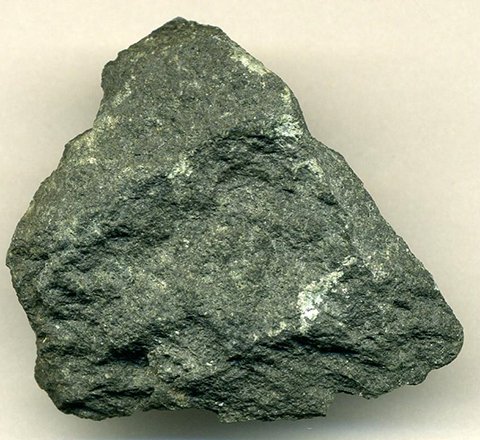
Photo courtesy of James St. John / CC BY (https://creativecommons.org/licenses/by/2.0/)
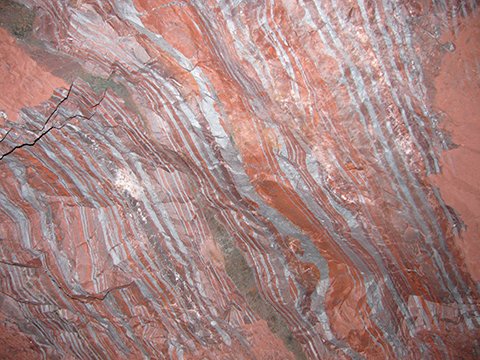
Photo courtesy of Amy Block

Photo courtesy of James St. John / CC BY (https://creativecommons.org/licenses/by/2.0/)
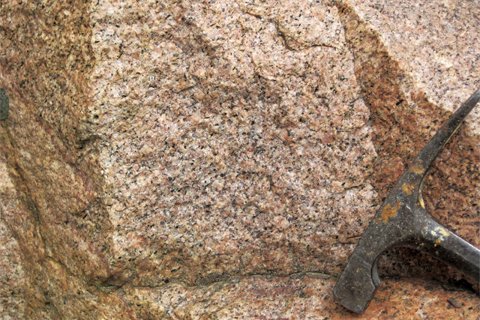
Photo courtesy of James St. John / CC BY (https://creativecommons.org/licenses/by/2.0/)
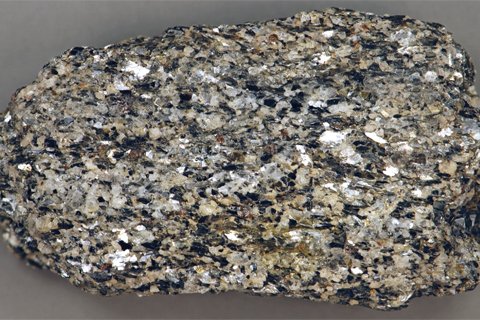
Photo courtesy of James St. John / CC BY (https://creativecommons.org/licenses/by/2.0/)
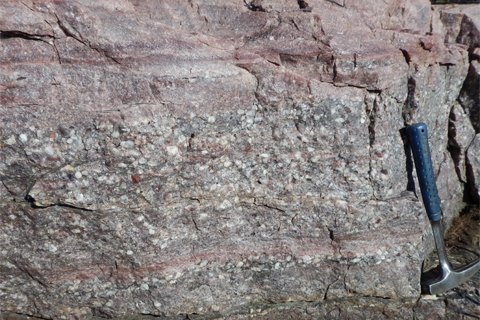
Photo courtesy of Mark A. Jirsa

Photo courtesy of James St. John / CC BY (https://creativecommons.org/licenses/by/2.0/)
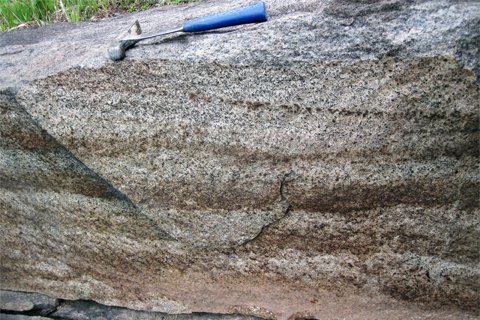
Photo courtesy of James St. John / CC BY (https://creativecommons.org/licenses/by/2.0/)
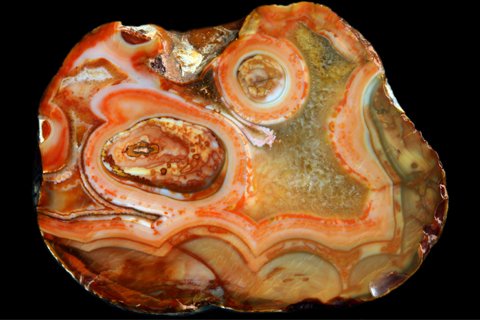
Photo courtesy of Lech Darski / CC BY-SA (https://creativecommons.org/licenses/by-sa/4.0/)

Photo courtesy of James St. John / CC BY (https://creativecommons.org/licenses/by/2.0/)

Photo courtesy of James St. John / CC BY (https://creativecommons.org/licenses/by/2.0/)

Photo courtesy of Julia R. Steenberg
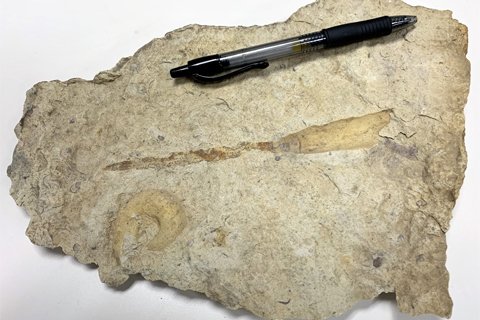
Photo courtesy of Andrew J. Retzler

Photo courtesy of Katherine J. Marshall
+
What kind of fossil is this?
Fossils give us a glimpse of what life was like on Earth in ancient geologic time, as well as a window into past climatic conditions. A fossil is a trace or remains of an ancient animal or plant preserved within rocks or unconsolidated material. Fossil evidence of some of the most primitive life forms (i.e., algae and bacteria) can be found in the older Precambrian rocks of northern Minnesota, while more complex plant and animal fossils are preserved in the sedimentary rocks in the southeastern portion of the state. Much like determining the type of rock sample found, the locality and type of rock in which you found your fossil sample is very important for making a detailed identification of the specimen.
There are many online resources for helping one identify a particular fossil specimen in general, but more expertise is usually needed to properly identify the specific genus or species. For more detailed information about fossils found within Minnesota, you can visit our Fossils page or any number of the links below:
- Minnesota At-A-Glance: Fossil Collecting in the Twin Cities Area
- Educational Series 1. Guide to Fossil Collecting in Minnesota (revised)
- Paleontology in Minnesota
- Fossils – clues to the past
In general, the types of fossils found in Minnesota include the following:
- Cyanobacteria (stromatolites)
- Sponges and sponge-like animals
- Corals
- Bryozoans
- Brachiopods
- Snails (or gastropods)
- Nautiloids
- Clams and oysters (or bivalves)
- Trilobites
- Ostracods
- Crinoids (can be microscopic)
- Conodonts
- Ammonites
- Shark teeth and other fish material
- Crocodilians
- Dinosaur material (very rare!)
- Mammoth bones and teeth
- Petrified wood
- Leaves
- Pollen spores (can be microscopic)
- Several types of fossil traces
It is also important to keep in mind the many inorganic (nonliving-sourced) structures one may come across that can be mistaken as fossils. These structures are known as pseudofossils, and can include:
+
Is this a meteorite?
We are currently working to add information to this section. For now, please see our Meteorites page for further details. MGS staff are happy to review photos of your sample to help determine if it could be a meteorite. However, please note that the MGS is unable to provide official authentication of meteorites.
+
Are there earthquakes in Minnesota?
We are currently working to add information to this section. For now, please see our Earthquakes page for further details.